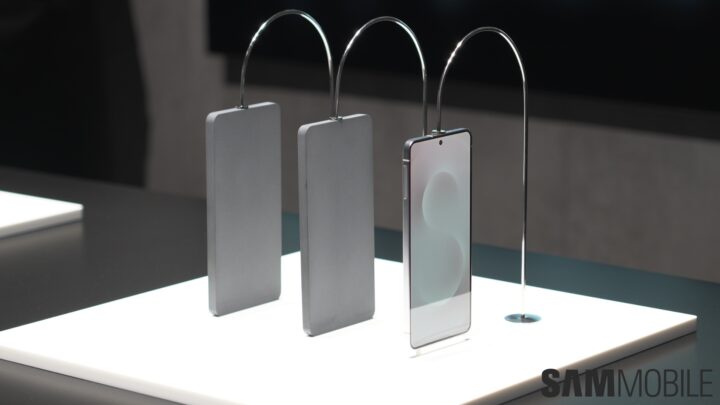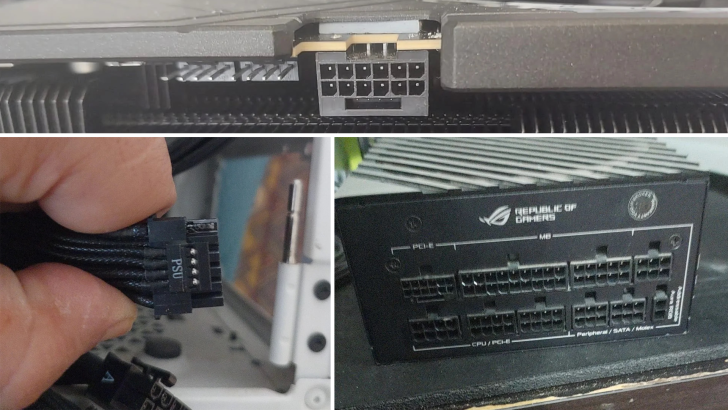I tested the Galaxy S25 Plus and Pixel 9 Pro cameras, it’s no contest – Digital Trends
If you’re looking for a new flagship Android phone and want something that’s pocket-friendly, you’ve probably been considering Google’s flagship, the Pixel 9 Pro. However, you may also be considering Samsung’s latest middle flagship, the Galaxy S25 Plus.Both phones have very similar features, with each company equipping its flagship with a flagship processor, good battery life, and an excellent display. However, while both phones feature a triple camera setup, each company has taken a different approach.Google has followed Apple’s model and equipped the Pixel 9 Pro with the same camera as the Pixel 9 Pro XL, while Samsung treats the Galaxy S25 Plus as a combination of the Galaxy S25 Ultra and Galaxy S25. The result is interesting but doesn’t meet overall expectations, as I covered in our Galaxy S25 Plus review.Which of these has the better camera? To find out, I took to the streets and the skies and tested them across the world. Here’s how each camera performs.Before we dig into showing the real-world performance differences, let’s take a quick look at the camera specs of each phone:As we can see, Google opted for a similar resolution across all three cameras combined with pixel binning for a larger pixel size and better light capture, whereas Samsung has gone for three sensors with different resolutions and specifications. This likely means that the Pixel 9 Pro should have more consistency when switching between lenses, especially in video, but does it deliver?Both companies have adopted a similar strategy to their phone cameras — with one telephoto camera doing all the heavy lifting for zoom photos, combined with a lot of AI — but take fundamentally different approaches. Samsung suggests that a telephoto with 3x optical zoom that uses AI at higher zoom levels is the right way, whilst Google opted for a periscope telephoto with 5x optical zoom.The Galaxy S25 Plus displays 3x and 5x telephoto options in the viewfinder, so for consistency, I also forced 3x samples from the Pixel 9 Pro so we can directly compare them. With that in mind, let’s look at how each phone performed.This first test is rather revealing as it shows both sides of the comparison in one. In the ultrawide and wide angle (1x) shots, the Pixel 9 Pro struggles to differentiate between the bright sun and the rest of the photo, whereas the Galaxy S25 Plus keeps a muted hue across all the photos. Once the sun drops out of the photo, the Pixel 9 Pro proves to be slightly better and then considerably better than the Galaxy S25 Plus.Here the details are lacking in the Galaxy S25 Plus zoom again, especially at the higher zoom lengths, but I do like the color reproduction in the water slightly more than the Pixel 9 Pro. There’s little difference in this, but a lot of difference in the zoom quality.Given the results of the previous two tests, the Galaxy S25 Plus mostly outperformed my expectations, although the Pixel 9 Pro is still considerably better overall. However, in the viewfinder, both appeared to be fairly similar, so I think Google’s processing and use of AI delivers better overall results.Each company has also focused on delivering improved lowlight performance, but what if you’re in Dubai and can see Steve Aoki performing in the near distance? Could either of these phones take good enough photos to be worth using? Let’s take a look.At the higher zoom levels, both phones are fairly similar and mostly usable although I wouldn’t post these. However, there’s no contest at the lower zoom levels: the vibrancy and overall nature of the ultrawide and wide photos captured by the Pixel 9 Pro are Instagram-worthy as they are, with no filter needed. Overall, there’s no real contest as — aside from a few specific shots at specific zoom lengths — the Pixel 9 Pro easily outperforms the Galaxy S25 Plus.The Pixel 9 Pro outperforms the Galaxy S25 Plus for photos, but what about video? How does each phone handle transitioning between different lenses and focal lengths, and how does changing lenses affect the quality between the lenses? Let’s take a look, starting with a daylight zoom test on the Galaxy S25 Plus.Now let’s take a look at the same test on the Pixel 9 Pro.Of course, it’s not just during the day that you may be tempted to try Zoom, so how does each perform when there’s significantly less light? Let’s take a further look at them, starting with the Galaxy S25 Plus.How does Google’s Pixel 9 Pro fare? Let’s take a look:Overall, each phone is fairly similar at video zoom, although there are subtle differences and crucially, I’m not sure I’d want to use any of these at anything beyond 2x or 3x zoom. For lowlight, there’s no context as the Pixel 9 Pro is far better. Worth noting is how the quality difference between the ultrawide and wide cameras on the Galaxy S25 Plus is so noticeable, whereas the Pixel 9 Pro is high quality even using the ultrawide camera that lacks OIS.One reason I keep returning to Samsung phones is the portrait mode, as Samsung equips all of its phones with a variety of filters and options, and allows you to change the strength and effect of these after you’ve taken the photo.In comparison, Google has a more limited portrait mode, but past Pixel phones have had exceptional depth detection, so which phone captures better portrait photos?Both phones perform fairly similarly at first glance, and it may seem like splitting hairs to find a difference, but as you zoom into the photo, it’s clear that the Galaxy S25 Plus takes a better overall portrait photo. The colors are more balanced, but crucially, there’s no distortion around my sister’s head, and it can capture more of the different strands of hair.What about selfies? I love taking selfies and both phones allow you to capture selfies with portrait blurring, but which one does it better? Crucially, do you need the higher resolution selfie camera on the Pixel 9 Pro, or is the 10MP snapper on the Galaxy S25 Plus good enough?I prefer the selfie camera on the Pixel 9 Pro here as it captures brighter photos and doesn’t seem to be as impacted by the harsh sunlight. It also captures slightly more detail in the background, and there’s also no lens flare like there is on the Galaxy S25 Plus. All in all, these phones prove to be equally matched at taking portraits, with the Galaxy S25 Plus better for selfies captured with the rear camera, while the Pixel 9 Pro is better for portrait selfies.Both of these phones may cost $1,000, but there’s a significant difference overall in the quality of their cameras. The Pixel 9 Pro proves to be far more capable when zooming in for both video and photos and in low light, there’s no contest as well. In particular, the low-light zoom test showed that the Pixel 9 Pro can capture low-light photos that are Instagram-ready, whereas the Galaxy S25 Plus would likely need considerable edits and filters to achieve the same.However, the Galaxy S25 Plus is definitely better at portraits, and having separately tested both phones with food photography — although not at the same time hence why they’re not in this comparison — I also prefer Samsung’s approach.Which phone wins? For the zoom test, which was the primary goal of this comparison, the Pixel 9 Pro won by a considerable margin. However, for subjects that are closer or more complicated, the Galaxy S25 Plus is arguably better overall.The clue about what makes the Samsung Galaxy S25 Edge special is in the name, but exactly how slim are we talking? The most up-to-date speculation puts the phone at a mere 5.84mm thick, even slimmer than has been suggested already. It brings the device’s dimensions far closer to some of the thinnest phones ever made.Until now, the Galaxy S25 Edge — previously known as the Galaxy S25 Slim — was expected to be 6.4mm thick, which although definitely thin, wasn’t groundbreaking. The latest comes from well-known phone leaker Ice Universe, apparently quoting another well-known phone leaker, OnLeaks. In a message on the Chinese social network Weibo, it’s stated the Edge’s dimensions will be 158.2 x 75.5 x 5.84mm.This year, thin is in, for the smartphone industry. Oppo will soon drop the world’s thinnest foldable phone in the market. Apple’s rumored iPhone 17 Air continues to be a topic of hot speculation. Samsung, on the other hand, has already given a live demonstration of its Galaxy S25 Edge.Thankfully, it seems there won’t be as many compromises as we initially expected for such a thin phone. According to a fresh leak that touts a “confirmed” status for the hardware details, the sleek phone will come armed with a 200-megapixel rear camera.Samsung’s newest flagship has finally landed in stores and it would be easy to look at the Galaxy S25 Ultra as nothing more than an iterative upgrade that brings a few small upgrades to the table. However, as Andy covered in our Galaxy S25 Ultra review, to do so would be to do a disservice to the overall experience.While reviewing the Galaxy S25 Plus — which offers a lot but failed to meet my expectations — over the past two weeks, I’ve also been using the Galaxy S25 Ultra. It turns out that while Samsung’s middle-of-the-road flagship didn’t quite hit the mark, its flagship sibling has left a mark on me.Upgrade your lifestyleDigital Trends helps readers keep tabs on the fast-paced world of tech with all the latest news, fun product reviews, insightful editorials, and one-of-a-kind sneak peeks.
Source: https://www.digitaltrends.com/mobile/samsung-galaxy-s25-plus-vs-pixel-9-pro-camera-comparison/



